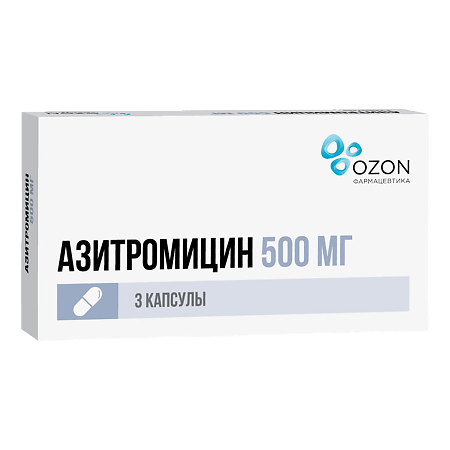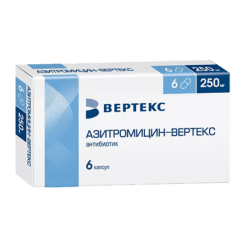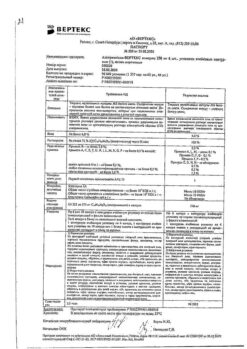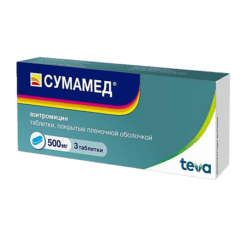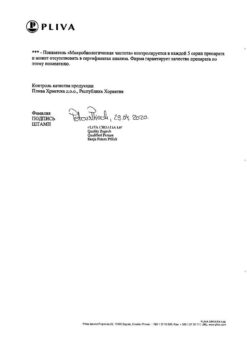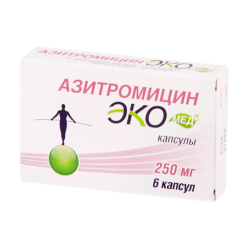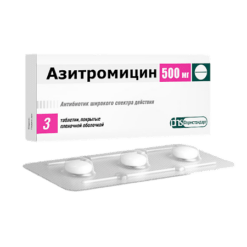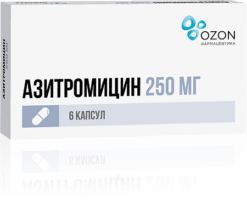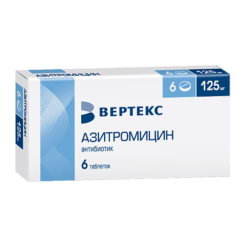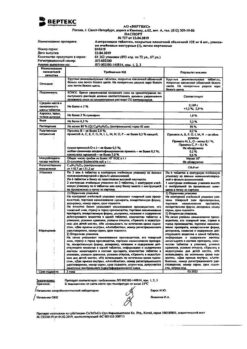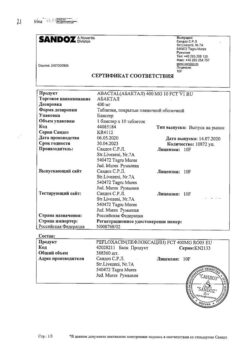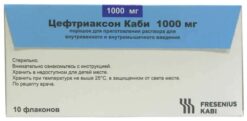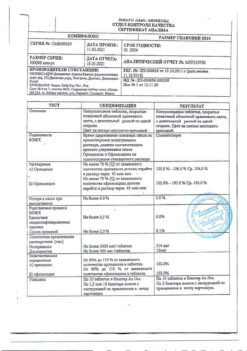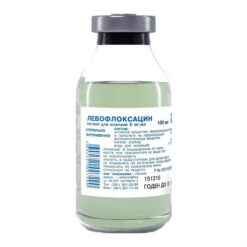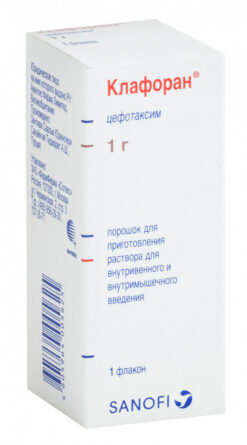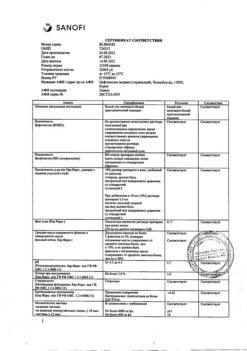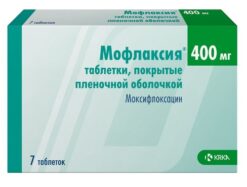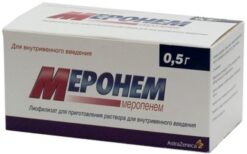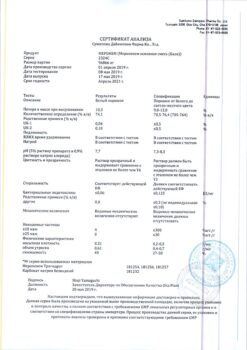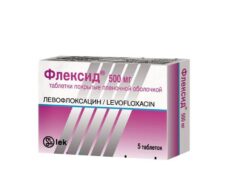No products in the cart.
Azithromycin, 500 mg 3 pcs
€4.91 €4.36
Description
Pharmacotherapeutic group: Azalid antibiotic
ATC code: J01FA10
Pharmacodynamics:
Azithromycin is a bacteriostatic broad spectrum antibiotic of the group of macrolides-azalids. It has a broad spectrum of antimicrobial action. The mechanism of action of azithromycin is associated with inhibition of microbial cell protein synthesis.
Indications
Indications
Infectious inflammatory diseases caused by microorganisms sensitive to azithromycin:
– infections of the upper respiratory tract and ENT organs (pharyngitis tonsillitis sinusitis otitis media);
– lower respiratory tract infections (acute bronchitis exacerbation of chronic bronchitis);
– community-acquired pneumonia including.
– Community-acquired pneumonia, including that caused by atypical pathogens (see “Special Indications”).
– infections of the skin and soft tissues (acne vulgaris of moderate severity rye impetigo secondary infectious dermatoses);
– initial stage of Lyme disease (borreliosis) – erythema migrans;
– urinary tract infections caused by Chlamydia trachomatis (urethritis cervicitis).
Active ingredient
Active ingredient
Azithromycin
Composition
Composition
One film-coated tablet contains:
active ingredient:
azithromycin dihydrate (in terms of azithromycin) – 500,000 mg;
excipients:
Microcrystalline cellulose – 36,000 mg;
lactose monohydrate – 33,464 mg;
povidone K-30 – 26,000 mg;
crospovidone – 26,000 mg;
sodium lauryl sulfate – 1,300 mg;
colloidal silica – 6,600 mg;
magnesium stearate – 6,600 mg;
film jacket:[hypromellose – 12,000 mg, talc – 4,000 mg, titanium dioxide – 2,200 mg, macrogol 4000 (polyethylene glycol 4000) – 1,800 mg] or [dry film coating mixture containing hypromellose (60%), talc (20%), titanium dioxide (11%), macrogol 4000 (polyethylene glycol 4000) (9%)] – 20,000 mg.
How to take, the dosage

How to take, the dosage
Ingestion without chewing at least 1 hour before or 2 hours after meals once a day.
Adults and children over 12 years of age with body weight over 45 kg
Infections of the upper and lower respiratory tract ENT organs with skin and soft tissue: 1 tablet (500 mg) 1 time daily for 3 days (15 g course dose).
In acne vulgaris of moderate severity: 1 tablet (500 mg) 1 time per day for 3 days then 1 tablet (500 mg) 1 time per week for 9 weeks (course dose 60 g). The first weekly tablet should be taken 7 days after taking the first daily tablet (8th day from the start of treatment) the next 8 weekly tablets at 7-day intervals.
In Lyme disease (initial stage of borreliosis) – erythema migrans (erythemamigrans): 1 time per day for 5 days: day 1 – 10 g (2 tablets of 500 mg) then from day 2 to day 5 – 05 g (1 tablet of 500 mg) (cumulative dose of 30 g).
In case of urogenital tract infections caused by Chlamydiatrachomatis (urethritis-cervicitis): uncomplicated urethritis/cervicitis – 10 g (2 tablets of 500 mg) once.
Infections of the upper and lower respiratory tract infections of the ENT organs, skin and soft tissue: at the rate of 10 mg/kg of body weight once daily for 3 days (the course dose is 30 mg/kg). For convenient dosing it is recommended to use Table 2.
Table 2. Calculation of Azithromycin dosage for children with body weight less than 45 kg:
Body weight | Amount of azithromycin in tablets | ||
18-30 kg /td> | 2 tablets of 125 mg (250 mg azithromycin) | ||
31-44 kg | 3 tablets of 125 mg (375 mg azithromycin) | 3 tablets of 125 mg (375 mg azithromycin)/p> | |
at least 45 kg | prescribe doses recommended for adults |
| Weight | 0.010 kg |
|---|---|
| Shelf life | 3 years. Do not use after the expiration date. |
| Conditions of storage | Store in the dark place at a temperature not exceeding 25°C. Store out of the reach of children. |
| Manufacturer | Ozon, Russia |
| Medication form | pills |
| Brand | Ozon |
Other forms…
Related products
Buy Azithromycin, 500 mg 3 pcs with delivery to USA, UK, Europe and over 120 other countries.

